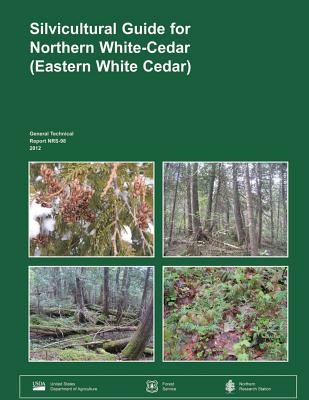
- We will send in 10–14 business days.
- Author: U S Department of Agriculture
- Publisher: CreateSpace Independent Publishing Platform
- Year: 2015
- Pages: 82
- ISBN-10: 1505826918
- ISBN-13: 9781505826913
- Format: 21.6 x 28 x 0.4 cm, minkšti viršeliai
- Language: English
- SAVE -10% with code: EXTRA
Silvicultureal Guide for Northern White-Cedar (Eastern White Cedar) (e-book) (used book) | bookbook.eu
Reviews
Description
Despite its importance to biodiversity and use in a variety of products, northern white-cedar (eastern white cedar; Thuja occidentalis L., referred to as cedar throughout this guide) is often considered a secondary species. It is among the least studied commercially important tree species in North America. Forest practitioners encountering cedar have little or sometimes contradictory information about its characteristics and potential. The challenges of managing for multiple objectives makes it difficult to consider cedar in silvicultural prescriptions. As a result, silvicultural treatments are often inadequate to insure that cedar stands or the cedar components of mixed-species stands are renewed. This could diminish forest biodiversity and lead to a reduction in the sustainable level of cedar harvesting in the future.
EXTRA 10 % discount with code: EXTRA
The promotion ends in 22d.02:18:37
The discount code is valid when purchasing from 10 €. Discounts do not stack.
- Author: U S Department of Agriculture
- Publisher: CreateSpace Independent Publishing Platform
- Year: 2015
- Pages: 82
- ISBN-10: 1505826918
- ISBN-13: 9781505826913
- Format: 21.6 x 28 x 0.4 cm, minkšti viršeliai
- Language: English English
Despite its importance to biodiversity and use in a variety of products, northern white-cedar (eastern white cedar; Thuja occidentalis L., referred to as cedar throughout this guide) is often considered a secondary species. It is among the least studied commercially important tree species in North America. Forest practitioners encountering cedar have little or sometimes contradictory information about its characteristics and potential. The challenges of managing for multiple objectives makes it difficult to consider cedar in silvicultural prescriptions. As a result, silvicultural treatments are often inadequate to insure that cedar stands or the cedar components of mixed-species stands are renewed. This could diminish forest biodiversity and lead to a reduction in the sustainable level of cedar harvesting in the future.


Reviews